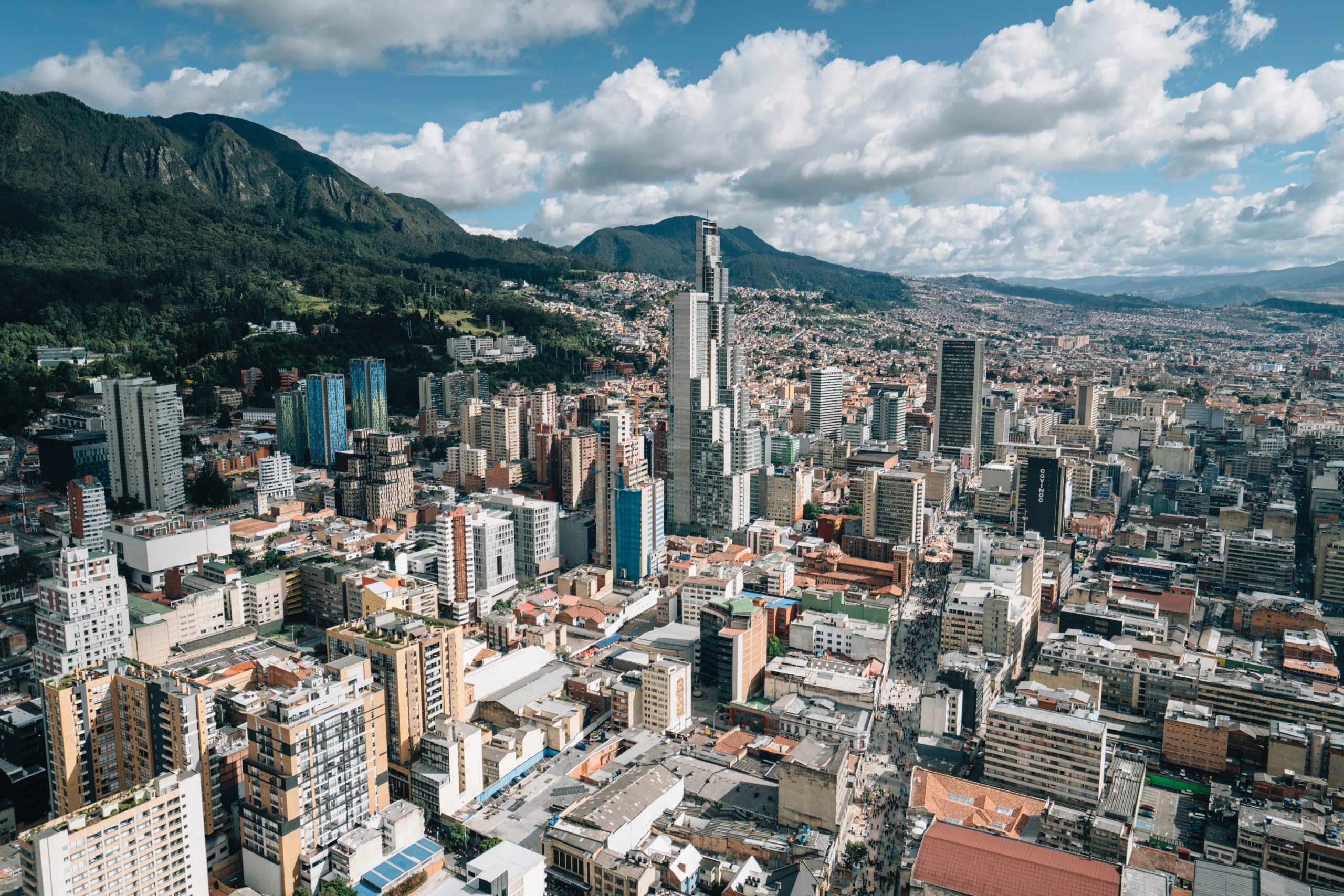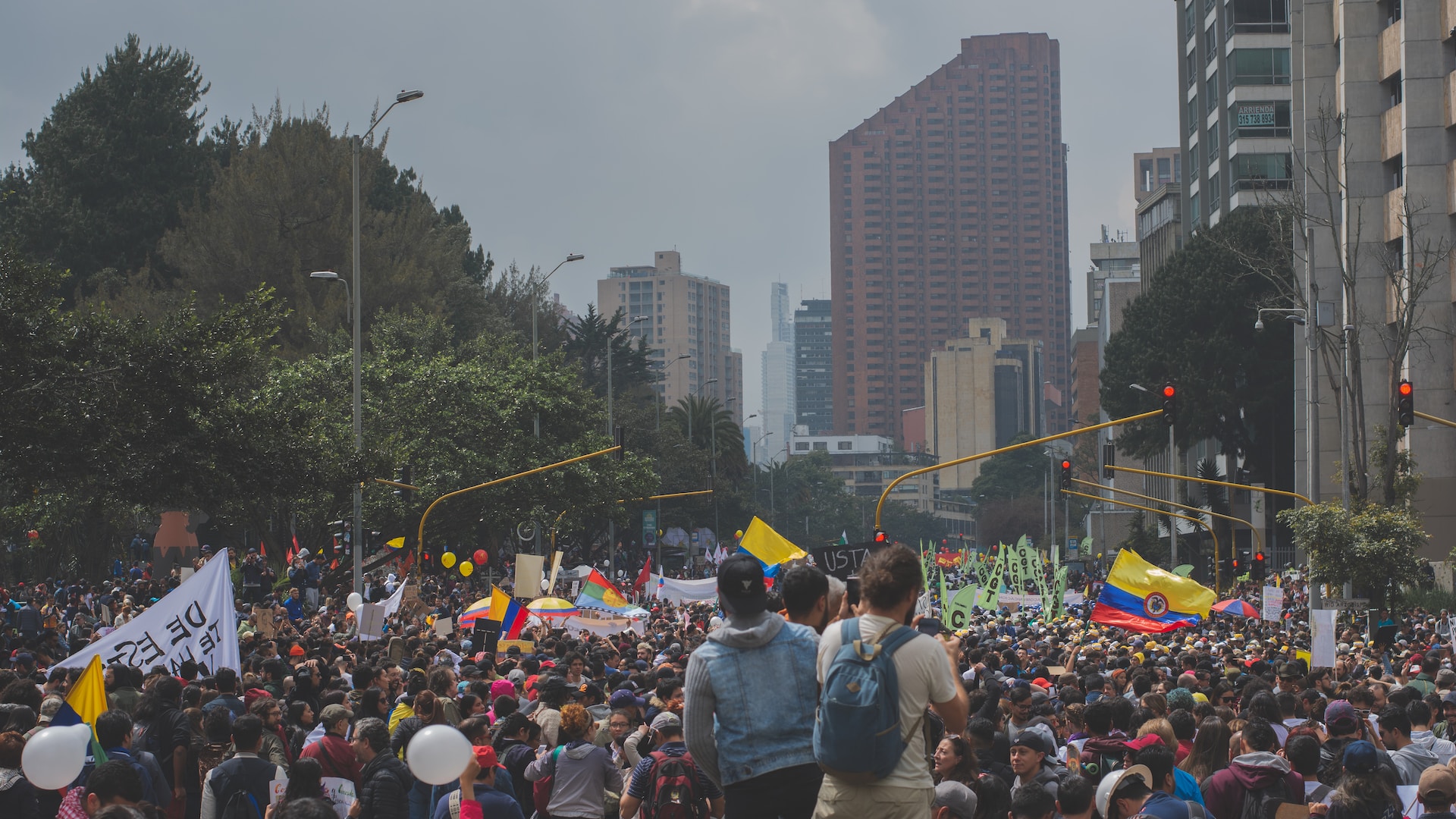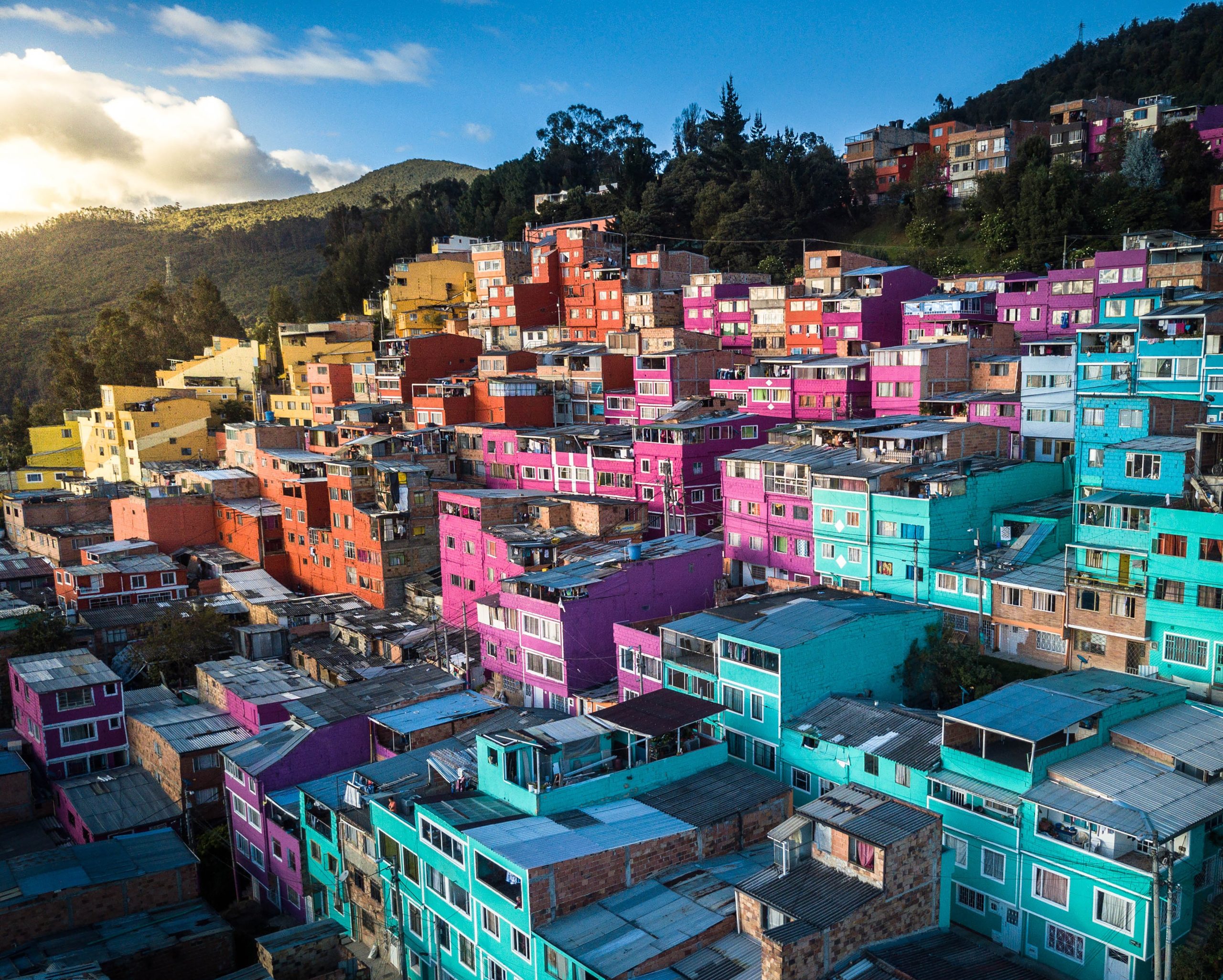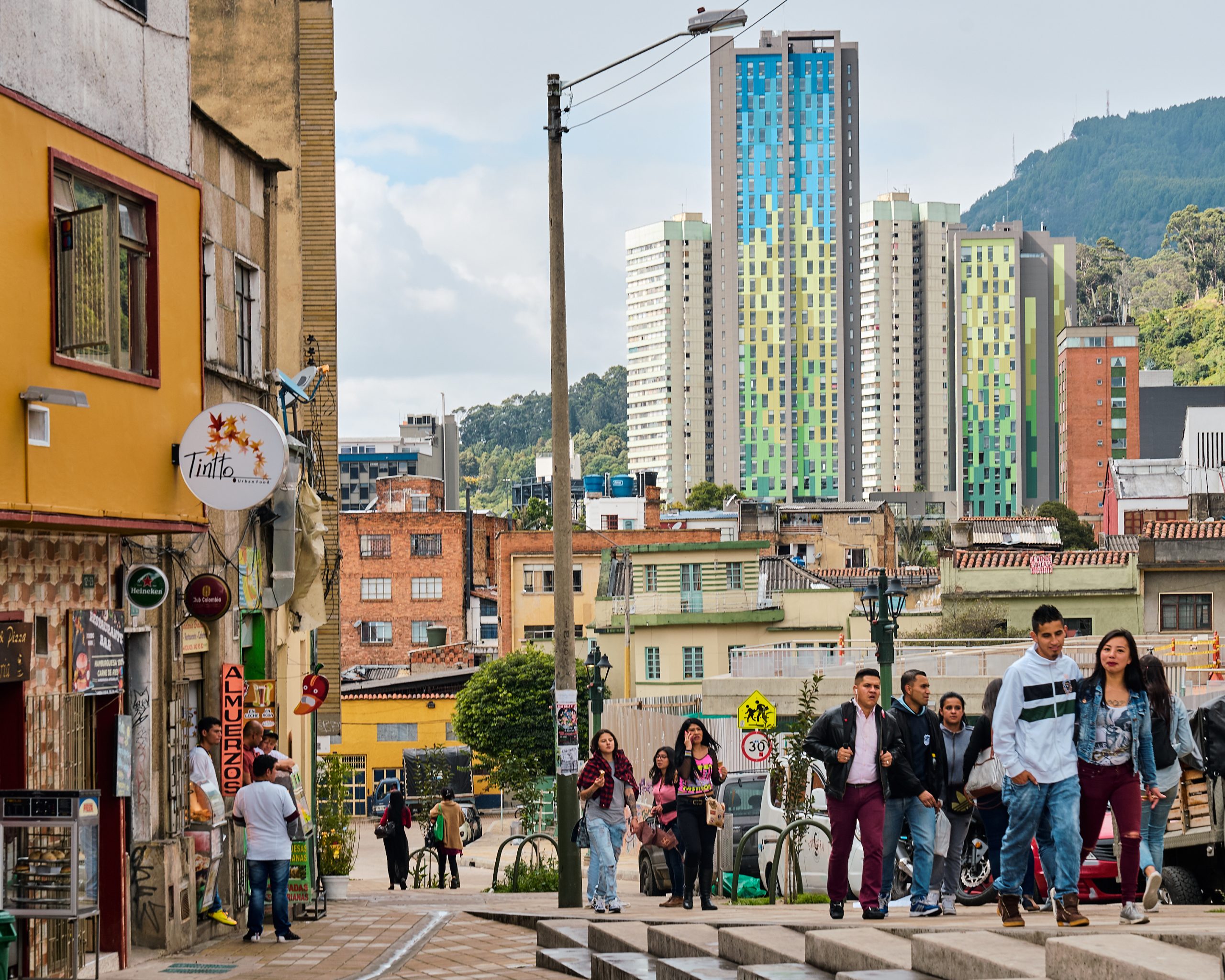
Bogotá, the Colombian capital, has long been associated with insecurity and drug wars. Nowadays, however, the city is recovering and making important, often inspiring strides towards sustainability. Its transport sector holds many lessons. Learn more about Bogotá here.
Billboard
Skyscrapper
Halfpage
History of Bogotá
Bogotá lies in central Colombia at an altitude of about 2600 metres above sea level in the Northern Andes Mountains. It occupies a sloping plain between the Guadalupe and Monserrate mountains. The city is laid out in a grid pattern with many squares, such as the central Plaza Bolívar. Both buildings from the colonial period and modern apartment towers dominate the city.
Like all countries on the American continents, Colombia looks back at millennia of human settlement. Indigenous groups like the Chibcha, the Kalina, and the Quimbaya lived in Colombia before European settlement began in the 16th century. In 1538, the Spanish colonialists took over control of Bacatá, which they christened “Santa Fé de Bacatá”. This name soon changed to Bogotá. The city became the capital of the viceroyalty of New Granada and therefore a centre of Spanish colonial power in South America.
In 1810 and 1811, Bogotá’s citizens revolted successfully against the Spanish colonialists, but it took until 1819 to become independent. National hero Simon Bolívar took the city after his victory at the Battle of Boyacá. In 1821, Bogotá became the capital of Gran Colombia, which included the current countries of Venezuela, Ecuador, Panama, and Colombia and lasted until 1930.
Political struggles and the isolated geographical location of the city long stunted its growth and prosperity. In 1948, riots and a wave of violence swept the region, until political parties achieved an agreement ten years later.

From drugs to commerce
With the advent of organised drug trading from the South American continent to the US and other countries of the Global North, Colombia became a participant and a victim in the many drug wars fought over the last decades. Additional pressure came from the civil war, in which the FARC guerrilla played an important role. Only in 2016 did stakeholders reach a peace accord, although many argue that the civil war continues.
Today, Bogotá is a much safer city. It is the home of the country’s tire, chemical and pharmaceutical industries. The main activities of the Colombian capital are commercial. Both the stock exchange and the main banks of the country are located here. Air travel and Rail Roads as well as good road connections mean that Bogotá is also a transport hub.
The city has some excellent universities and many cultural institutions, such as the Botanical Institute, the National Conservatory of Music, the National Museum, the National Astronomical Observatory, and the National Library.
Countless parks, the Tequedama waterfalls and the cable car going up Monserrate Mountain are important attractions in Bogotá. The city has 7.2 million inhabitants and is continuously growing. It still faces severe social and economic segregation, which is very much connected to urban zones. However, urban planners are using the transport system to overcome these inequalities.
Sustainable mobility
Transportation has been a key issue in Bogotá since the 1950s, when the country’s massive transportation project, the Metro, started out. Then mayor Fernando Mazuera decided to eliminate the tram and build a metro instead. The mega project is still underway. Today, Bogotá has one metro line, with up to five lines expected by 2028. It also has a popular Bus Rapid Transit network and, since 2018, the TransMiCable cable cars connect low-income Ciudad Bolívar with the bus network.
The construction of new transport link goes hand in hand with the revitalisation of urban zones. Bogotá’s mayors and municipal officers recognised this early on and therefore included actions like the improvement of water and sewage networks, the generation of public space, densification efforts, and employment opportunities.
In recent years, Bogotá has become particularly famous because of its former mayors, Enrique Peñalosa, who pushed for the construction of bicycle paths. He also introduced car-free Sundays on many main streets to encourage cycling among Bogotá’s citizens. His people-oriented policies also included a social housing programme; a large-scale recuperation of parks and public spaces; new and recovered sidewalks; the formalisation of over 300 informal settlements; the construction of three large public libraries and cultural centres; and a strong transport demand policy that restricted car usage and removed street parking.
Today, Peñalosa is a popular speaker on urbanism, public transport, biking, and social justice. His TED talk on “Why Buses Represent Democracy in Action” has a million views and has inspired cities worldwide.

Architectural highlights of Bogotá
Today’s Bogotá is not only an example of the way forward for sustainable urban transport, but it is also a vibrant, cosmopolitan, and often unexpectedly beautiful city. Diverse people with their cultures, art, and architecture offer high contrasts. The very different architectural highlights of the city showcase this. A visit to Bogotá should include the following places:
- La Candelaria: This is Bogotá’s cultural district and historic downtown with picturesque, cobbled streets, colonial heritage buildings and the Cerro de Monserrate, which offers beautiful views over the city.
- Plaza de Bolívar: The grand central square of Colombia’s capital shows the colonial architectural history of the city. It also includes a statue of independence hero Bolívar and important neo-classical buildings like the Palace of Justice, the National Capital, and the Primary Cathedral of Bogotá.
- Santa Clara Museum: This 1647 building was originally a church. It is a beautiful example of Baroque architecture and hosts a museum today. There are rich ornate interiors and a large wooden door to be admired.
- Virgilio Baraco Library: Completed in 2003 by designer Rogelio Salmona, this modern library has a circular brick structure. It is surrounded by bodies of water and houses about 150,000 volumes.
- Gabriel García Márquez Cultural Centre: Colombia’s most famous author is celebrated in this cultural centre with an auditorium, exhibition spaces, countless books, and cultural events.
- Museo de Oro: The Gold Museum shows pre-Hispanic gold work and archaeological objects. It also delves into the importance of gold for colonialisation.

Did you know that Bogotá was one of 15 winner cities of the Global Mayors Challenge 2021? The city convinced the jury with a concept for “care blocks” that tackles the issue of the unpaid care burden falling disproportionately on women.












